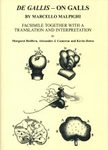About this book
Language: Trilingual in English, French, and German
A complete facsimile edition of the three-volume Hortus Eystettensis.
When Prince-Bishop Johann Konrad von Gemmingen (1593/95–1612) undertook a radical renovation of the Willibaldsburg Castle, overlooking the Altmühl River in Eichstätt, Bavaria, he also created a surrounding palatial pleasure garden of magnificence and grandeur. To preserve the garden for future generations – and provide an ‘evergreen’ record of its contents, compiling plants from all four seasons and presenting them in that order – he commissioned the garden’s director, Nuremberg apothecary Basilius Besler (1561–1629), and a team of engravers to immortalize its treasures in print.
The resulting Hortus Eystettensis, published in Nuremberg in 1613 and containing 367 hand-coloured plates and detailed descriptions, was a work of meticulous execution and spectacular diversity, and remarkably expensive for its time. As the garden contained a variety of plants imported from exotic locales, the three volumes exhibited a remarkable range, covering a total of 90 families and 340 genera. Due to the decorative, stylized execution of these illustrations, which began to see plants in aesthetic, rather than merely practical or medicinal terms, the book is seen as a milestone in the art of botanical illustration. While published before the time of standardized classification systems, it was nonetheless later described by Carl Linnaeus as an "incomparable work".
Besler’s catalogue long outlived the gardens, which were destroyed in 1634 by invading Swedish troops during the Thirty Years’ War. However, a lengthy redevelopment project at the historic site has culminated in the opening of the modern Bastion Garden in 1998, containing many of the plants shown in the Hortus Eystettensis.
Offering high-quality reproductions of these arresting illustrations, based on the copy of the Hortus Eystettensis at the University Library of Eichstätt-Ingolstadt, this facsimile edition is accompanied by detailed plate descriptions of each plant’s botanical, pharmaceutical, and symbolic significance and an appendix of further essays which place the garden and the book in their historical contexts.
This edition presents a valuable piece of botanical literature which, on the rare occasions where a copy appears on the market, can fetch prices of over $1,000,000 at auction. In line with Besler’s original intentions, this facsimile unfurls the garden to a wider audience and captures it for posterity.
Please note that this 3-volume set weighs 6.5 kg
Customer Reviews
Biography
Klaus Walter Littger was deputy director of the Eichstatt-Ingolstadt University Library and head of the university's collection of historical books and manuscripts. In addition to essays on German language and literature, he has published numerous works on the history of libraries as well as the diocese and University of Eichstatt, and on the history of its local music. He is also co-editor of a journal and a series on the history of the diocese.
Werner Dressendörfer is a pharmaceutical historian, academic librarian, and former honorary Professor at the University of Erlangen-Nuremberg, specializing in the history of the Early Modern herbal, the cultural history of medicinal plants, and plant symbolism in art. Dressendoerfer is the author of several TASCHEN publications, including The Garden at Eichstatt, The Lilies, and Leonhart Fuchs: The New Herbal of 1543.





![The Garden at Eichstatt (3-Volume Set) [English / French / German] The Garden at Eichstatt (3-Volume Set) [English / French / German]](http://mediacdn.nhbs.com/jackets/jackets_resizer_xlarge/26/263535.jpg?height=620)
![The Garden at Eichstatt (3-Volume Set) [English / French / German]](http://mediacdn.nhbs.com/jackets/jackets_resizer/26/263535.jpg)
![The Garden at Eichstatt (3-Volume Set) [English / French / German]](http://mediacdn.nhbs.com/jackets/jackets_resizer/26/263535_01.jpg)
![The Garden at Eichstatt (3-Volume Set) [English / French / German]](http://mediacdn.nhbs.com/jackets/jackets_resizer/26/263535_02.jpg)
![The Garden at Eichstatt (3-Volume Set) [English / French / German]](http://mediacdn.nhbs.com/jackets/jackets_resizer/26/263535_03.jpg)
![The Garden at Eichstatt (3-Volume Set) [English / French / German]](http://mediacdn.nhbs.com/jackets/jackets_resizer/26/263535_04.jpg)
![The Garden at Eichstatt (3-Volume Set) [English / French / German]](http://mediacdn.nhbs.com/jackets/jackets_resizer/26/263535_05.jpg)
![The Garden at Eichstatt (3-Volume Set) [English / French / German]](http://mediacdn.nhbs.com/jackets/jackets_resizer/26/263535_06.jpg)
![The Garden at Eichstatt (3-Volume Set) [English / French / German]](http://mediacdn.nhbs.com/jackets/jackets_resizer/26/263535_07.jpg)
![The Garden at Eichstatt (3-Volume Set) [English / French / German]](http://mediacdn.nhbs.com/jackets/jackets_resizer/26/263535_08.jpg)
![The Garden at Eichstatt (3-Volume Set) [English / French / German]](http://mediacdn.nhbs.com/jackets/jackets_resizer/26/263535_09.jpg)
![The Garden at Eichstatt (3-Volume Set) [English / French / German]](http://mediacdn.nhbs.com/jackets/jackets_resizer/26/263535_10.jpg)
![The Garden at Eichstatt (3-Volume Set) [English / French / German]](http://mediacdn.nhbs.com/jackets/jackets_resizer/26/263535_11.jpg)
![The Garden at Eichstatt (3-Volume Set) [English / French / German]](http://mediacdn.nhbs.com/jackets/jackets_resizer/26/263535_12.jpg)
![The Garden at Eichstatt (3-Volume Set) [English / French / German]](http://mediacdn.nhbs.com/jackets/jackets_resizer/26/263535_13.jpg)
![The Garden at Eichstatt (3-Volume Set) [English / French / German]](http://mediacdn.nhbs.com/jackets/jackets_resizer/26/263535_14.jpg)
![The Garden at Eichstatt (3-Volume Set) [English / French / German]](http://mediacdn.nhbs.com/jackets/jackets_resizer/26/263535_15.jpg)
![The Garden at Eichstatt (3-Volume Set) [English / French / German]](http://mediacdn.nhbs.com/jackets/jackets_resizer/26/263535_16.jpg)
![The Garden at Eichstatt (3-Volume Set) [English / French / German]](http://mediacdn.nhbs.com/jackets/jackets_resizer/26/263535_17.jpg)
![The Garden at Eichstatt (3-Volume Set) [English / French / German]](http://mediacdn.nhbs.com/jackets/jackets_resizer/26/263535_18.jpg)
![The Garden at Eichstatt (3-Volume Set) [English / French / German]](http://mediacdn.nhbs.com/jackets/jackets_resizer/26/263535_19.jpg)
![The Garden at Eichstatt (3-Volume Set) [English / French / German]](http://mediacdn.nhbs.com/jackets/jackets_resizer/26/263535_20.jpg)
![The Garden at Eichstatt (3-Volume Set) [English / French / German]](http://mediacdn.nhbs.com/jackets/jackets_resizer/26/263535_21.jpg)



















![A Garden Eden: Masterpieces of Botanical Illustration [English / French / German]](http://mediacdn.nhbs.com/jackets/jackets_resizer_medium/25/257076.jpg?height=150&width=112)





